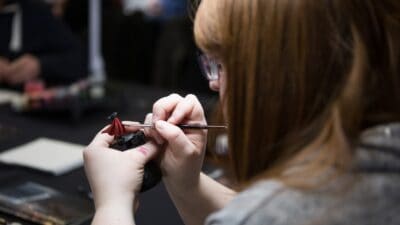Before I decide whether to buy a bank’s shares, I always like to look at its return on equity and its core tier 1 capital ratio.
These core financial ratios provide an indication of how successful a bank is at generating profits using shareholders’ funds, and of how strong its finances are. As a result, both ratios can have a strong influence on dividend payments and share price growth.
Today, I’m going to take a look at the eurozone’s largest bank, Banco Santander S.A. (LSE: BNC) (NYSE: SAN.US), to see how attractive it looks on these two measures.
Return on equity
The return a company generates on its shareholders’ funds is known as return on equity, or ROE. Return on equity can be calculated by dividing a company’s annual profit by its equity (i.e, the difference between its total assets and its total liabilities) and is expressed as a percentage.
Santander’s return on equity has declined steadily since 2008 — perhaps what’s more surprising is that it has managed to make a decent profit throughout that time, despite some writing off €60bn in bad loan provisions over the last four years:
| Banco Santander | 2008 | 2009 | 2010 | 2011 | 2012 | Average |
|---|---|---|---|---|---|---|
| ROE | 15.2% | 14.1% | 11.4% | 7.1% | 2.9% | 10.1% |
How does Santander compare?
One way of assessing a bank’s risk is with its core tier 1 capital ratio, which compares the value of the bank’s retained profits and equity with its loan book.
In the table below, I’ve listed Santander’s core tier 1 capital ratio, ROE and price to tangible book value, alongside those of the two UK banks with the biggest exposure to the Americas, Santander’s key foreign market:
| Company | Core Tier 1 Ratio | Price to tangible book value | 5-year average ROE |
|---|---|---|---|
| Barclays | 11.1% | 84% | 6.0% |
| HSBC Holdings | 12.7% | 131% | 7.6% |
| Banco Santander | 11.1% | 152% | 10.1% |
Santander’s main attraction for most investors is its €0.60 annual dividend, which is expected to be maintained this year, giving a stunning 9.4% prospective yield.
The bank’s price-to-book-value ratio of just 75% also seems attractive — until you strip out goodwill and intangible assets. This leaves the bank’s shares with a price to tangible book value ratio of 152%, far higher than any of its UK peers.
Is Santander a buy?
Santander’s non-performing loan rate is still rising, and I suspect that some of the bank’s assets could suffer further impairments.
I’m not sure that Santander’s shares deserve to trade at such a high premium to their tangible asset value, and I suspect that their high yield is probably a big support for the bank’s share price.
For me, this makes Santander shares too risky, so I rate them as a cautious hold.
If you already hold Santander stock, then you might be interested in learning about five star income shares that have been identified by the Fool’s team of analysts as “5 Shares To Retire On“.
I own three of the shares featured in this free report, and I don’t mind admitting they are amongst the most successful investments I’ve ever made.
To find out the identity of these five companies, click here to download your copy of this report now, while it’s still available.
> Roland owns shares in HSBC Holdings but does not own shares in any of the other companies mentioned in this article.







